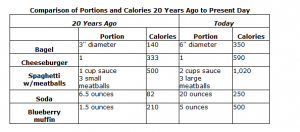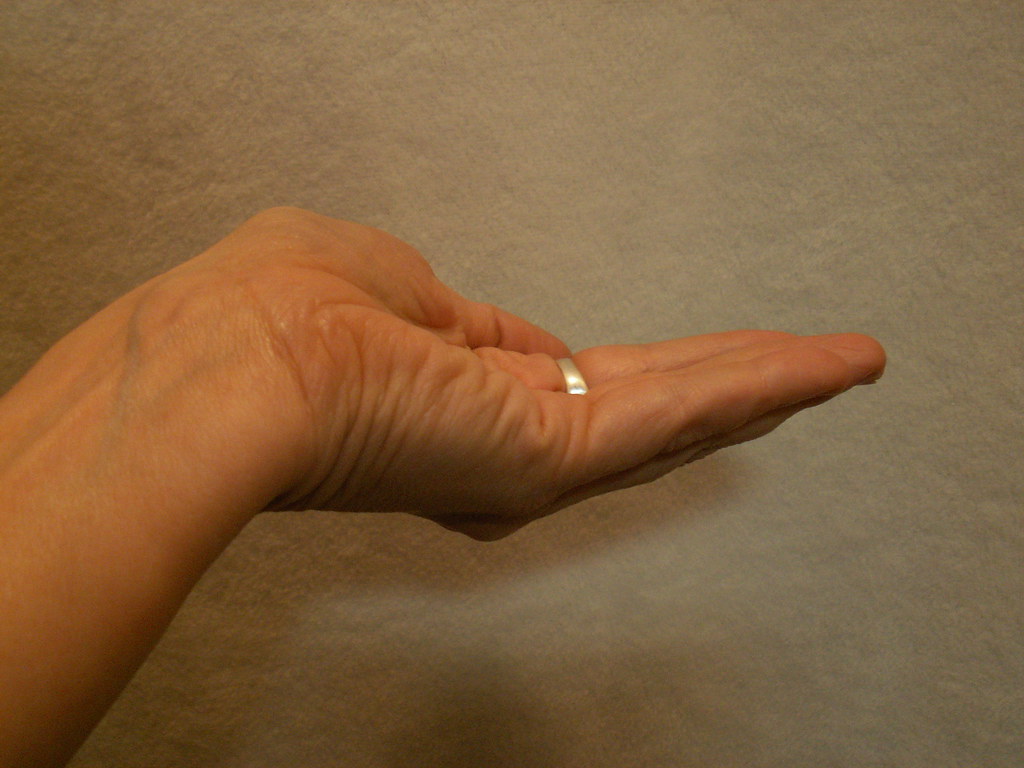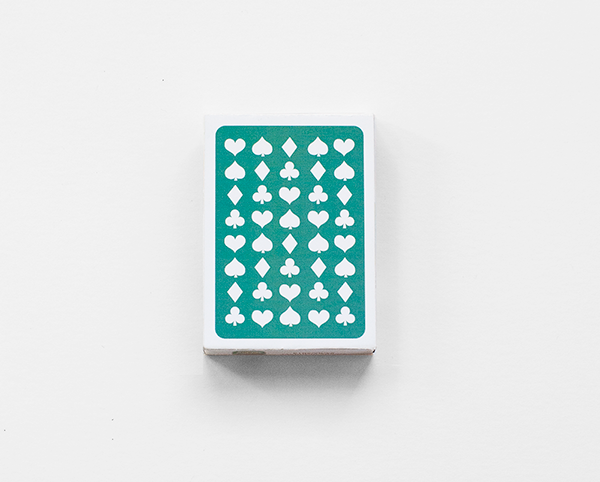3.2 – When Enough is Enough
Learning Objective
- Judge food portion sizes compared to serving sizes and analyze the role portion distortion has played in the current food environment.
Estimating Portion Size
Have you ever heard the expression, “Your eyes were bigger than your stomach?” This means that you thought you wanted a lot more food than you could actually eat. Amounts of food can be deceiving to the eye, especially if you have nothing to compare them to. It is very easy to heap a pile of mashed potatoes on your plate, particularly if it is a big plate, and not realize that you have just helped yourself to three portions instead of one.
The food industry makes following the 2020-2025 Dietary Guidelines for Americans a challenge. In many restaurants and eating establishments, portion sizes have increased, use of saturated fats and added sugars has increased, and consequently, the typical meal contains more calories than it used to. In addition, our sedentary lives make it difficult to expend enough calories during normal daily activities. In fact, more than one-third of adults are not physically active at all.
As we continue this discussion, we need to understand a couple of terms. A portion of food is the amount you choose to take and consume. A serving is the standard measured size of the food as listed on the food label or determined by expert consensus.
Table 3.2.1 Comparison of Portions and Calories twenty years ago and today.
Infographic on Portion distortion
Table 3.2.2: Determining Food Portions; American Cancer Society. “Controlling Portion Sizes.” Last revised January 2019
| Food Product | Amount | Object Comparison | Hand Comparison |
|---|---|---|---|
| Pasta, Rice | ½ c. |  |
Cupped hand |
| Fresh vegetables, cereal, soup, fruit, casserole | 1 c. |  |
N/A |
| Cooked vegetables, chips, crackers, pretzels | ½ c. or 1 ounce |  |
N/A |
| Meat, poultry, fish | 3 oz. |  |
The palm of your hand |
| Milk or other beverages | 1 c. | Fist | N/A |
| Salad dressing, peanut butter, cream cheese | 1 Tbsp. | Thumb | N/A |
| Oil | 1 tsp. | Thumb tip | N/A |
| Carbohydrates |
|---|
| Choose three to five servings with each meal. |
| Examples of one serving: |
Bread and Starches
|
Fruits
|
Milk
|
| Meats/Proteins |
|---|
| Choose one to three servings with each meal. |
| Examples of one serving: |
|
| Fats |
|---|
| Choose one to three servings with each meal. |
| Examples of one serving: |
|
| Free Foods |
|---|
| Use as desired |
| Examples: |
Foods with less than 20 calories per serving.*
|
Key Takeaway
- Judging portion sizes can be done using your hand or household objects in comparison. It can also be done using the MyPlate guide to determine how much food is a portion of that meal.
Discussion Starter
- Why is it important to judge portion sizes properly? Explain why it can be tricky to read food labels and figure out the caloric content for one serving.

